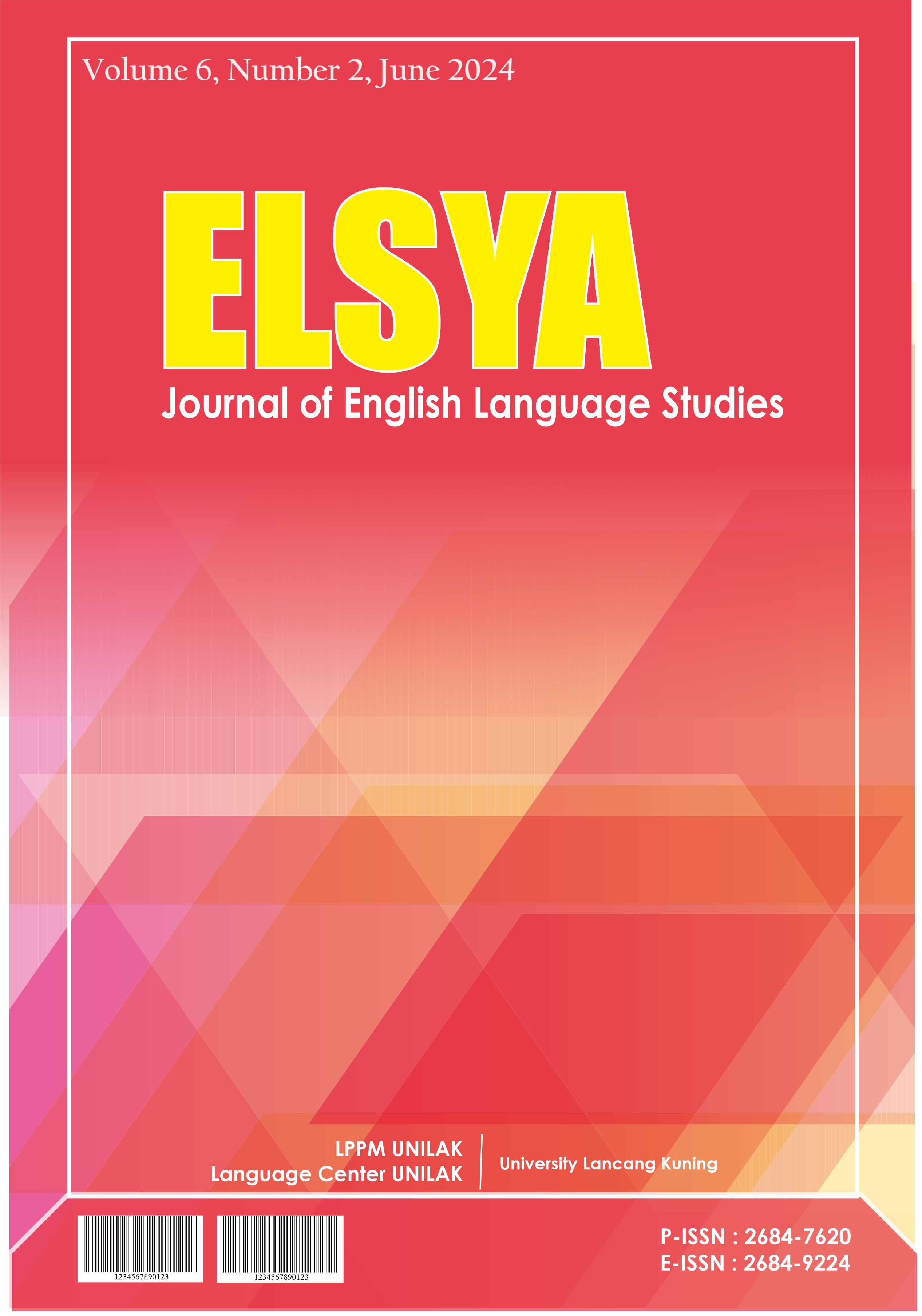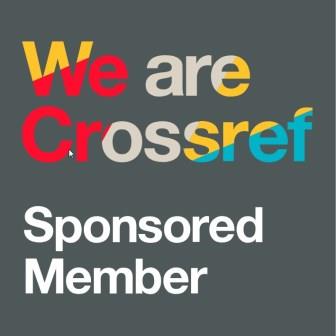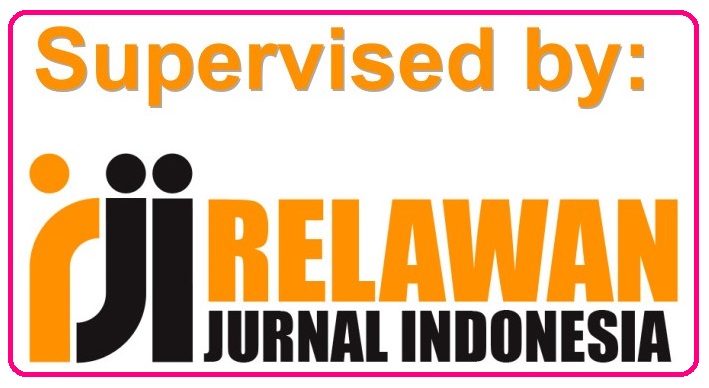Theoretical perspectives of integrating technology into English language learning
Abstract
Three issues of technology integration into English language learning are present: inquiries on what and how technology is used to support language learning, ignorance of theoretical foundations and technology standards as a basis to design technology-supported language tasks and instructions, and English language teachers’ attitudes that put technology far ahead of language learning. In response to these issues, this theoretical paper aims to discuss resources where teachers can find reliable technology to support their language teaching practices. It continues to explain language learning and task engagement principles and technology standards as a basis for designing language tasks and instructions. The author supports the discussions with relevant literature and instances of some technology-supported language tasks. The paper then proposes a professional learning community meeting where the teachers can learn collaboratively with their colleagues in a supportive learning environment on how to use various tech applications. The paper concludes that teachers with principled ways of using technology should perform better in supporting students’ learning with technology than those who design a technology-based task and instruction mainly based on their personal (and biased) experiences on what worked well with technology.
Downloads
References
Ayad, F. I., & Ajrami, S. J. (2017). The degree of implementing ISTE Standards in technical education colleges of Palestine. TOJET: The Turkish Online Journal of Educational Technology, 16(2), 107–118. http://www.tojet.net/articles/v16i2/16210.pdf
Boss, S. (2008). Overcoming technology barriers: How to innovate without extra money or support. Edutopia. https://www.edutopia.org/technology-how-to-implement- classroom
Culter, D. (n.d.). Crafting feedback that leads to learning. Edutopia. https://www.edutopia.org/article/crafting-feedback-leads-learning
Egbert, J. (2007). Asking useful questions: Goals, engagement, and differentiation in technology-enhanced language learning. Teaching English with Technology, 7(1), 1–17. https://bibliotekanauki.pl/articles/941200.pdf
Egbert, J., & Shahrokni, S. A. (2018). CALL principles and practices. Open Text Washington State University. https://opentext.wsu.edu/call/
Hamilton, B. (2018). Integrating technology in the classroom : Tools to meet the needs of every student( 2nd ed). International Society for Technology in Education.
Harmer, J. (2007). The practice of English language teaching (4th ed.). Pearson Longman.
Healey, D., Hegelheimer, V., Hubbard, P., Ioannou-Georgiou, S., Kessler, G., & Ware, P. (2008). TESOL Technology Standards Framework. Teachers of English to Speakers of Other Languages, Inc. (TESOL).
Hubbard, P., & Ioannou-Georgiou, S. (2017). An introduction to teaching languages reflectively with technology. In P. Hubbard & S. Ioannou-Georgiou (Eds.), Teaching English reflectively with technology (pp. 9–19). IATEFL.
Ivone, F. M., & Renandya, W. A. (2019). Extensive listening and viewing in ELT. TEFLIN Journal, 30(2), 237–256. https://doi.org/10.15639/teflinjournal.v30i2/237-256
Lee, I. (1998). Supporting greater autonomy in language learning. ELT Journal, 52(4), 282–290. https://doi.org/https://doi.org/10.1093/elt/52.4.282
Macalister, J. (2011). Today’s teaching, tomorrow’s text: Exploring the teaching of reading. ELT Journal, 65(2), 161–169. https://doi.org/10.1093/elt/ccq023
Mali, Y. C. G. (2021a). Simple technology for language classrooms. Satya Wacana University Press. https://repository.uksw.edu/handle/123456789/22245
Mali, Y. C. G. (2021b). Using postermywall to practice communication in a foreign language classroom. Teaching English with Technology, 21(3), 89–100. https://tewtjournal.org/download/using-postermywall-to-practice-communication-in-a-foreign-language-classroom-by-yustinus-calvin-gai-mali/
Mali, Y. C. G., & Salsbury, T. L. (2021). Technology integration in an Indonesian EFL writing classroom. TEFLIN Journal, 32(2), 243–266. https://journal.teflin.org/index.php/journal/article/view/1558/354
Mendoza, G. M. (2017). Facebook groups: A tool for writing enhancement and language skills empowerment. In P. Hubbard & S. Ioannou-Georgiou (Eds.), Teaching English reflectively with technology (pp. 179–190). IATEFL.
Miller, A. (2013). Bringing authenticity to the classroom. Edutopia. https://www.edutopia.org/blog/bringing-authenticity-to-the-classroom-andrew-miller
Muhtaris, K. L., & Ziemke, K. (2015). Amplify: Digital teaching and learning in the K-6 classroom. Heinemann.
Richards, J. C., & Schmidt, R. (2010). Longman dictionary of language teaching and applied linguistics (4th ed.). Harlow.
Shahrokni, S. A. (2016). Playposit: Using interactive videos in language education. Teaching English with Technology, 18(1), 105–115. https://www.researchgate.net/publication/322963047_Playposit_Using_interactive_videos_in_language_education
Shahrokni, S. A. (2017). Nearpod. TESL-EJ, 20(4), 1–17. http://tesl ej.org/wordpress/issues/volume20/ej80/ej80m2/
Silviyanti, T. M., & Yusuf, Y. Q. (2015). EFL teachers’ perceptions on using ICT in their teaching: To use or to reject? Teaching English with Technology, 15(4), 29–43. https://files.eric.ed.gov/fulltext/EJ1138430.pdf
Son, J. (2021). Technology standards for teachers and professional development frameworks. APACALL Newsletter, 25, 6–12. https://drjbson.com/papers/APACALL_Newsletter25_article_JS_2021.pdf
Trajtemberg, C., & Yiakoumetti, A. (2011). Weblogs: A tool for EFL interaction, expression, and self-evaluation. ELT Journal, 65(4), 437–445. https://doi.org/10.1093/elt/ccr015
Trust, T. (2018). 2017 ISTE Standards for Educators: From teaching with technology to using technology to empower learners. Journal of Digital Learning in Teacher Education, 34(1), 1–3. https://doi.org/10.1080/21532974.2017.1398980
Yunus, M. (2007). Malaysian ESL teachers’ use of ICT in their classrooms: Expectations and realities. ReCALL, 19(1), 79–95. https://doi.org/10.1017/S0958344007000614
- Author retains the copyright and grants Elsya Journal the right of first publication of the work simultaneously licensed under the Creative Commons Attribution-ShareAlike 4.0 License that allows others to share the work with an acknowledgment of the work's authorship and initial publication in this journal
- The author is able to enter into separate, additional contractual arrangements for the non-exclusive distribution of the journal's published version of the work (e.g., post it to an institutional repository or publish it in a book) with the acknowledgment of its initial publication in this journal.
- The author is permitted and encouraged to post his/her work online (e.g., in institutional repositories or on their website) prior to and during the submission process, as it can lead to productive exchanges, as well as earlier and greater citation of the published work (See The Effect of Open Access).








 Elsya Journal is licensed under
Elsya Journal is licensed under 